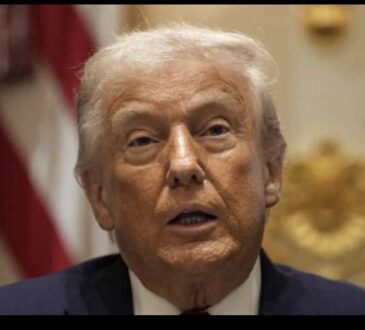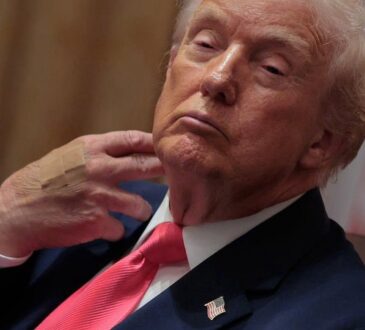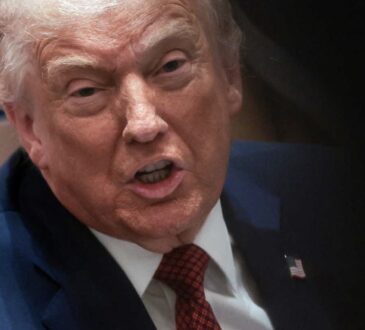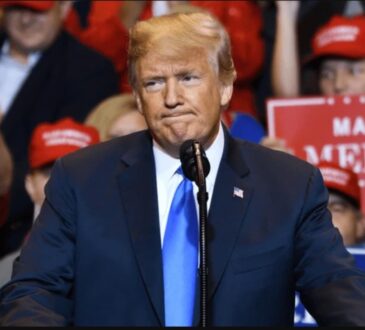
This time, the threat to American democracy is coming from the highest level of government — the White House — and that makes it more dangerous than ever.
President Donald Trump is using his power to reshape how future elections will work, especially the federal elections in 2026 and 2028. Through executive orders, legal tricks, and by putting loyal followers in key government roles, Trump is setting up a system that could let him or his allies challenge or change the results of those elections.
Since returning to power, Trump has filled top positions in the Department of Justice, FBI, and Department of Defense with people who are personally loyal to him, not necessarily qualified or independent. These people are more likely to do what he says, even if it means going against the law or democratic norms. He’s also issued executive orders giving himself more control over elections — something presidents traditionally don’t have much say in — and demanded private information about voters from the states.
A new report from the Brennan Center for Justice, a nonprofit that focuses on protecting voting rights, says that all these actions are part of a bigger plan. The goal, according to the report, is to make people distrust the results of future elections and to give Trump and his team the tools to interfere with them if needed. While some states and election officials are fighting back, the concern is growing.
One of the experts from the Brennan Center, Sean Morales-Doyle, said this level of interference from the White House is unlike anything we’ve seen before. He warned that it threatens the very system that keeps U.S. elections free and fair.
Trump has a long history of attacking the legitimacy of elections. He began his political career by falsely claiming President Obama wasn’t born in the U.S. He has repeatedly said that any election Republicans lose is fraudulent. Even after he won in 2016, he claimed the win would’ve been bigger if there hadn’t been fraud — with no proof. Then, after losing in 2020, he tried to stay in power illegally and encouraged a violent mob to storm the Capitol to block the certification of President Biden’s victory.
Back in 2020, some of Trump’s own appointees — like Attorney General William Barr — refused to go along with his attempts to steal the election. This time, he’s surrounded himself with people who are more likely to follow his lead. These include people who pushed lies about election fraud in 2020 and are now in charge of key institutions like the Department of Justice and FBI.
Instead of outsiders pushing conspiracy theories about elections, it’s now people inside the government doing it. These insiders have already started pressuring and threatening election officials. They’ve created task forces that are targeting those who protect elections rather than those trying to undermine them.
Trump has already taken concrete actions. For example, he issued an executive order that would let the federal government take over control of elections — something it doesn’t have the authority to do. It would require voters to show proof of citizenship, ban most voting machines, and give the federal government access to full voter lists from every state, including sensitive data like Social Security numbers. Judges have blocked parts of this order, but some efforts to get the data are still ongoing.
The Department of Homeland Security has asked states for their full voter files, and the Department of Justice has sued states to try to force them to hand them over — even though it’s illegal in many places to share that information.
Meanwhile, Trump’s administration has broken down federal protections meant to keep elections safe from hacking or foreign interference. They’ve also attacked the private lawyers and nonprofits that usually defend voting rights. Some big law firms have backed off from challenging Trump’s policies after facing pressure and threats from the administration.
This pressure campaign also extends to Democratic-aligned groups. Trump has gone after them by trying to take away their tax-exempt status and launching investigations into how they run elections. He rewards allies and punishes opponents. For example, he pardoned or shortened the prison sentences of those who took part in the January 6th attack, including those who were violent or tried to overthrow the government. And he’s supported others who broke laws related to elections.
The fear is that, leading up to or right after an election, all of these tools — executive orders, pressure on officials, access to voter data, and more — could be used to create chaos, delay results, or change the outcome. The strategy isn’t just about winning fair and square; it’s about making it harder for anyone else to win at all.
Refusing to follow Trump’s election orders could be twisted into claims of voter fraud. States that don’t go along might be accused of hiding something or become targets for federal action. All of this creates a cloud of suspicion — whether it’s true or not — and that could be used to justify interfering with the results.
By breaking down the government agency that protects election systems, the Trump administration also makes it easier for real attacks or glitches to happen. Then they can claim those problems are proof that the election can’t be trusted — even if the problems were avoidable.
The goal isn’t just to cause confusion. It’s also to scare people who might resist Trump’s plans. In 2020, some officials refused to help Trump overturn the election. Now, after seeing what happens to people who oppose him — like being sued, harassed, or threatened — others might stay quiet or even go along with him out of fear.
We’ve already seen how these tactics can play out. After the 2024 elections in North Carolina, a Democrat named Allison Riggs narrowly won a race for the state Supreme Court. Her opponent, a Republican, tried to overturn the results by claiming that some voters weren’t properly registered. A state court, stacked with partisan judges, threw out tens of thousands of votes and gave the seat to the Republican. A federal court later reversed that decision and said the votes were valid — but not before Riggs was blocked from taking her seat for more than four months.
This shows that even losing candidates can use legal loopholes and unproven claims to cause delays or try to take power they didn’t earn. If Republicans lost control of Congress, they could try something similar — refusing to seat Democrats in close races based on false claims, keeping their majority even if they technically lost.
Courts have generally rejected these kinds of claims, as they did after the 2020 election, but the concern is that with enough pressure and repetition, it might eventually work — or at least cause serious disruption.
The Brennan Center’s report isn’t just a warning about Trump himself. It’s a call to action for everyone — election officials, lawyers, tech experts, and everyday people — to pay attention now, not later. The threat is real, but it can be countered if enough people stand up for democracy and refuse to be intimidated.
The bottom line is: the danger isn’t only about what might happen on election day. It’s about what’s already happening — and whether enough people are willing to stop it.




